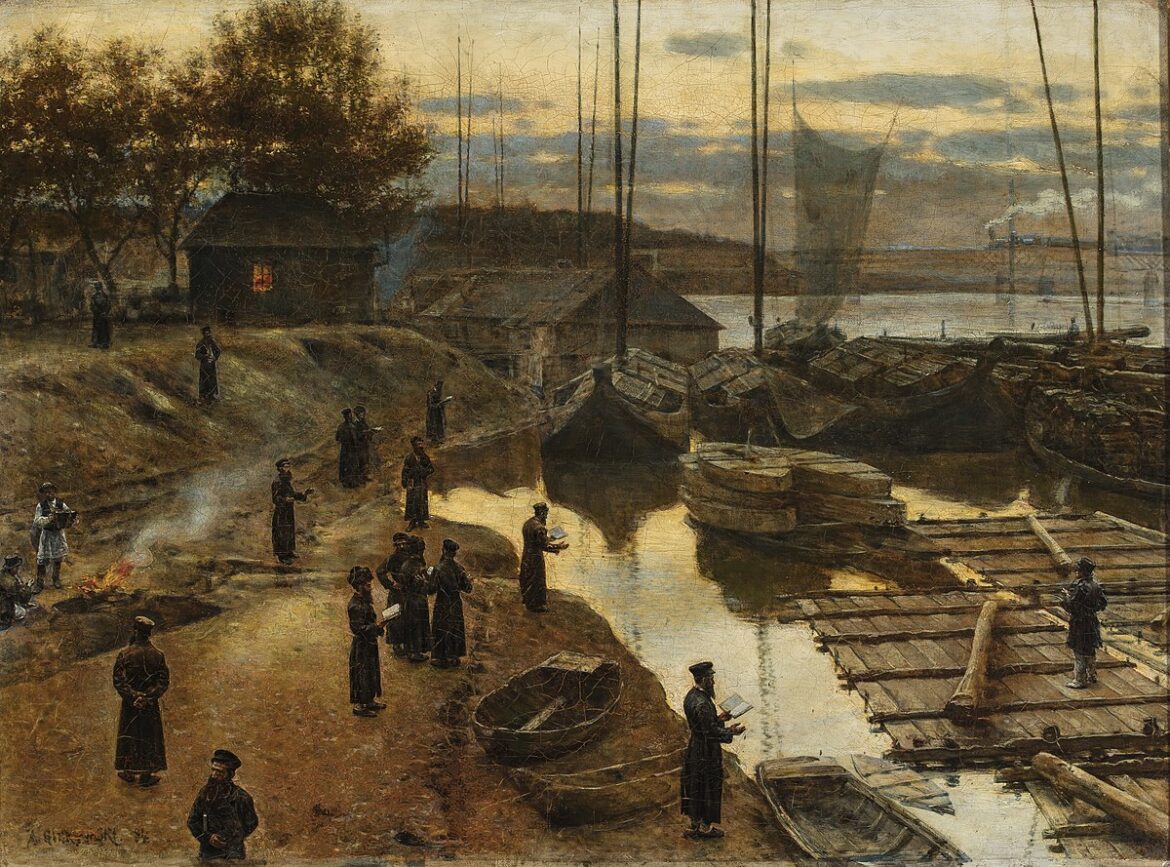Who was one of the most outstanding Polish painters of the second half of the 19th century and the only representative of his generation to associate the concept of modernity in painting not with moody contemplation of nature, but with a sober analysis of reality?
Aleksander Gierymski was born on 30 January 1850. He began his painting education at the Drawing School in Warsaw. Then, between 1868 and 1872, he studied under the guidance of teachers at the Munich Academy, from whom he received a rigorous lesson in Academicism and Neo-Renaissance, later he turned to Realism himself.
Gierymski became known in the Warsaw company of artists and critics for his paintings ‘Game of Mora’ and ‘Roman Austeria’, painted in Italy. His subsequent stays in Warsaw between 1881 and 1884 and 1886 and 1889, and his involvement in the literary and painting groups of the positivist weekly “Wanderer”, brought him to the forefront of the realist-naturalist trend in Polish art. In the best period of his career, he often depicted in several works the gates and backstreets of Warsaw’s Old Town, the picturesque poverty of Powiśle, the hard toil of the sandmen, the bustle of Jewish peddlers and their traditional rituals. Works such as The Gate in the Old Town, The Oranges Seller, one of the artist’s most famous paintings, depicting a Jewish old woman against the backdrop of the city skyline, Powiśle (1883), and the series The Rosh ha – Shana (1884, 1887 – 1888, 1890) were created at the time. In the last picture, he presented a study of space and light, bringing out the dark silhouettes of Jews, immobile in ritual prayer.
At the same time, the artist depicted the difficult life of proletarian Warsaw in the 1880s, showing the Vistula banks and the workers, fishermen, sandmen, and women living in wooden sheds. Similar attempts at a study of the passing of time can be found in the nocturnes painted by Gierymski in Munich and Paris between 1889 and 1893, especially in ‘Evening on the Seine’, which was said to be inspired by Impressionism. He had already been drawn to the problems of depicting sunlight during his earlier stays in Rome, when he worked on ‘The Roman Siesta’ (1875-1878) and especially on ‘Altana’ (1872).
In his thirty years of work, the artist changed his whereabouts frequently: from Warsaw and Krakow, to Germany, Italy and France. Despite his enormous output, he remained in the shadow of his elder brother, Maksymilian, a painter more appreciated for his artistry than Aleksander.
Aleksander Gierymski died between 6 and 8 March 1901 in Rome.





